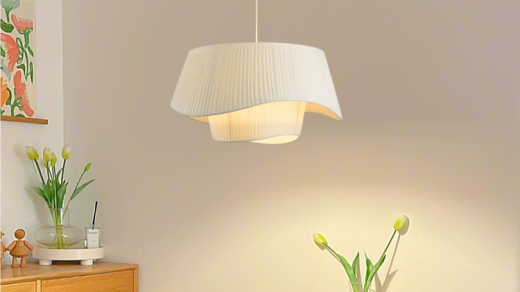Nordic style, often synonymous with Scandinavian design, has its roots deeply embedded in the cultural and historical contexts of the Nordic countries: Denmark, Finland, Iceland, Norway, and Sweden. Emerging in the early 20th century, this design philosophy was a response to the industrial revolution and the subsequent need for functional yet aesthetically pleasing objects. The movement gained significant traction during the 1950s and 1960s, when designers like Hans Wegner and Alvar Aalto began to emphasize simplicity, minimalism, and a connection to nature.
The ethos of Nordic design is characterized by clean lines, organic forms, and a focus on craftsmanship, which reflects the harsh yet beautiful landscapes of the region. The influence of Nordic style can also be traced back to the region’s long-standing traditions of craftsmanship and a deep respect for materials. The use of natural elements such as wood, stone, and textiles is prevalent, with an emphasis on sustainability and functionality.
This design approach is not merely about aesthetics; it embodies a lifestyle that values comfort, warmth, and a sense of community. The concept of “hygge,” a Danish term that encapsulates coziness and contentment, plays a significant role in Nordic design philosophy. It encourages the creation of spaces that foster well-being and connection among individuals, making it a timeless choice for modern interiors.
The Beauty of Walnut
Walnut wood has long been celebrated for its rich color and distinctive grain patterns, making it a favored material in both traditional and contemporary furniture design. Its deep brown hues can range from light to dark shades, often featuring beautiful variations that add character to any piece. The natural luster of walnut gives it an elegant appearance that can elevate the aesthetic of any room.
Beyond its visual appeal, walnut is also known for its durability and strength, making it an ideal choice for furniture that is meant to last. In addition to its physical properties, walnut wood carries a sense of history and tradition. Many artisans and craftsmen have worked with walnut for centuries, creating heirloom-quality pieces that can be passed down through generations.
This connection to craftsmanship enhances the allure of walnut furniture, as each piece tells a story through its unique grain and finish. Whether used in dining tables, cabinetry, or decorative accents, walnut brings warmth and sophistication to interiors while maintaining a timeless quality that resonates with the principles of Nordic design.
The Timeless Appeal of Nordic Design
The enduring charm of Nordic design lies in its ability to transcend trends while remaining relevant in contemporary settings. Its emphasis on simplicity and functionality resonates with modern sensibilities that prioritize minimalism and decluttering. The clean lines and understated elegance found in Nordic furniture create an inviting atmosphere that encourages relaxation and mindfulness.
This design philosophy aligns seamlessly with the growing movement towards sustainable living, as it promotes quality over quantity and encourages the use of natural materials. Moreover, Nordic design is inherently adaptable. Its neutral color palettes—often dominated by whites, grays, and earthy tones—allow for easy integration into various interior styles.
Whether one prefers a rustic farmhouse aesthetic or a sleek urban loft, Nordic elements can be incorporated without clashing with existing decor. This versatility is further enhanced by the thoughtful use of textures and layers, which can add depth to spaces while maintaining an overall sense of harmony. As such, Nordic design continues to inspire homeowners and designers alike, proving that beauty can indeed be found in simplicity.
The Versatility of Table Lamps
Table lamps Manugoo are often overlooked as mere functional objects; however, they play a crucial role in enhancing the ambiance of a space. Their versatility allows them to serve multiple purposes—from providing task lighting for reading or working to creating a warm glow that fosters relaxation. In Nordic design, table lamps are not just sources of light; they are integral components of the overall aesthetic.
With their sleek designs and thoughtful craftsmanship, they embody the principles of simplicity and functionality that define this style. The variety of table lamp designs available today further underscores their versatility. From minimalist Scandinavian designs featuring clean lines and muted colors to more sculptural pieces that serve as statement objects, there is a table lamp to suit every taste and interior style.
For instance, a simple ceramic base paired with a linen shade can evoke a sense of calmness in a bedroom setting, while a bold metal lamp with geometric shapes can add an element of modernity to a living room. This adaptability makes table lamps essential accessories for anyone looking to enhance their home’s lighting scheme while adhering to the principles of Nordic design.
How to Incorporate Nordic Style in Your Home
Incorporating Nordic style into your home involves more than just selecting furniture; it requires a holistic approach to creating an environment that embodies simplicity, functionality, and warmth. Start by focusing on color palettes that reflect the natural world—think soft whites, muted grays, and earthy tones that evoke the serene landscapes of Scandinavia. These colors can be applied to walls, textiles, and larger furniture pieces to establish a cohesive foundation for your space.
Next, consider the materials you choose for your furnishings and decor. Emphasizing natural materials such as wood, wool, and stone will not only enhance the aesthetic but also contribute to a sense of authenticity within your home. For example, incorporating walnut furniture pieces can add warmth and character while aligning with the principles of Nordic design.
Additionally, layering textures through throws, cushions, and rugs can create visual interest without overwhelming the space. Finally, don’t forget about lighting; strategically placed table lamps can provide both functional illumination and artistic flair, further enhancing the Nordic ambiance you wish to achieve.
The Benefits of Adding a Table Lamp to Your Space
Creating Zones and Defining Spaces
One significant advantage is their ability to create zones within open spaces. By strategically placing table lamps in different areas—such as beside a sofa or on a bedside table—you can delineate functional areas for reading, working, or relaxing without the need for physical barriers.
Adding Focal Points and Sparking Conversation
This zoning effect contributes to an open yet cozy atmosphere that is characteristic of Nordic design. Moreover, table lamps can serve as focal points within a room’s decor. A well-designed lamp can draw attention and spark conversation while complementing other elements in the space. For instance, a sculptural lamp with an artistic base can become a statement piece on an otherwise understated side table.
Flexibility in Lighting Options
Additionally, table lamps provide flexibility in lighting options; they allow you to adjust the mood of a room based on your needs at any given moment. Whether you require bright light for focused tasks or soft illumination for winding down in the evening, table lamps offer versatility that enhances both functionality and aesthetics.
Choosing the Right Lighting for Your Home
Selecting appropriate lighting for your home is essential for creating an inviting atmosphere that reflects your personal style while meeting practical needs. When considering lighting options, it’s important to think about the different layers of light: ambient (general), task (specific activities), and accent (highlighting features). A well-balanced lighting scheme incorporates all three layers to ensure functionality without sacrificing aesthetics.
In Nordic design specifically, natural light plays a pivotal role in shaping interiors. Large windows are often utilized to maximize daylight exposure; however, when natural light is limited—especially during long winter months—artificial lighting becomes crucial. Table lamps are an excellent choice for providing warm ambient light that mimics natural illumination.
When selecting lamps, consider their size relative to the space; oversized lamps can overwhelm small areas while petite designs may get lost in larger rooms. Additionally, pay attention to the color temperature of bulbs; warmer tones create a cozy atmosphere reminiscent of candlelight—a hallmark of Nordic interiors.
Investing in Quality and Longevity
In an age where fast fashion dominates many aspects of consumer culture, investing in quality furnishings becomes increasingly important—especially within the realm of interior design. Nordic style emphasizes craftsmanship and durability; therefore, choosing well-made pieces ensures that your investment will stand the test of time both in terms of aesthetics and functionality. High-quality materials not only enhance visual appeal but also contribute to sustainability by reducing waste over time.
When selecting furniture or decor items—such as table lamps—look for brands or artisans known for their commitment to quality craftsmanship. This often means opting for products made from solid woods like walnut or those featuring durable fabrics that resist wear and tear. Additionally, consider timeless designs that won’t easily go out of style; classic shapes and neutral colors will allow your pieces to remain relevant even as trends evolve.
By prioritizing quality over quantity in your home decor choices, you create an environment that reflects both personal taste and an appreciation for enduring beauty—a true embodiment of Nordic design principles.




